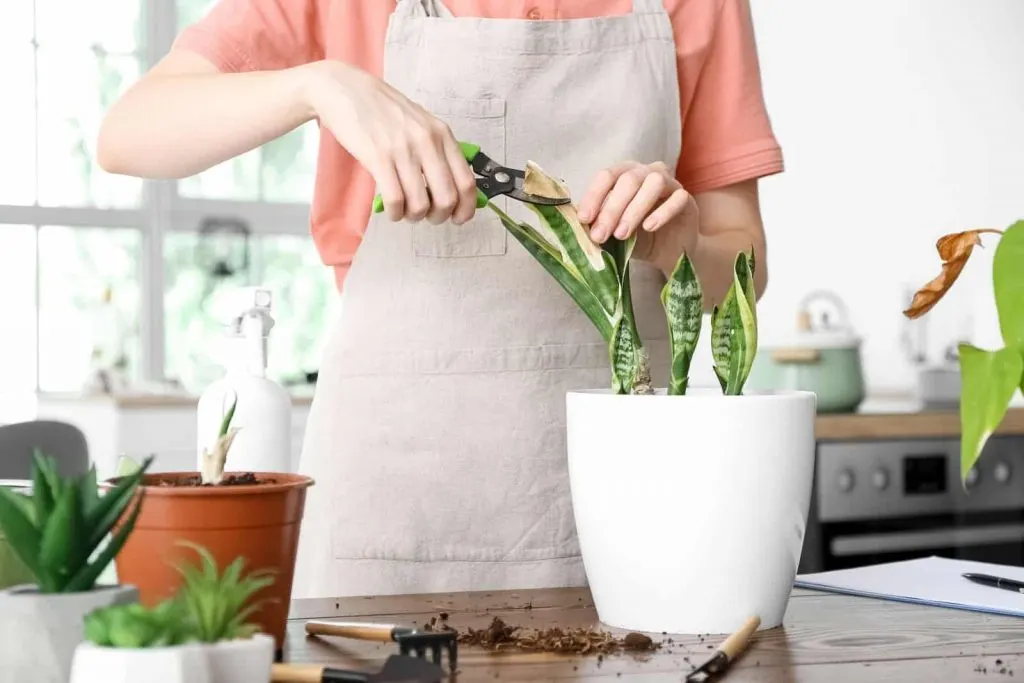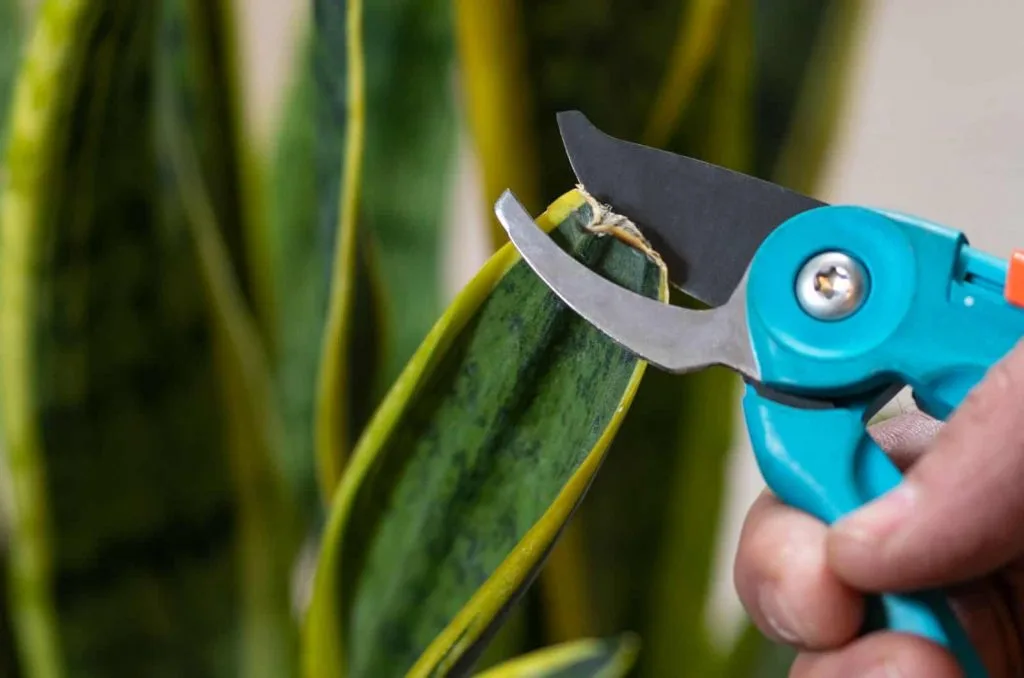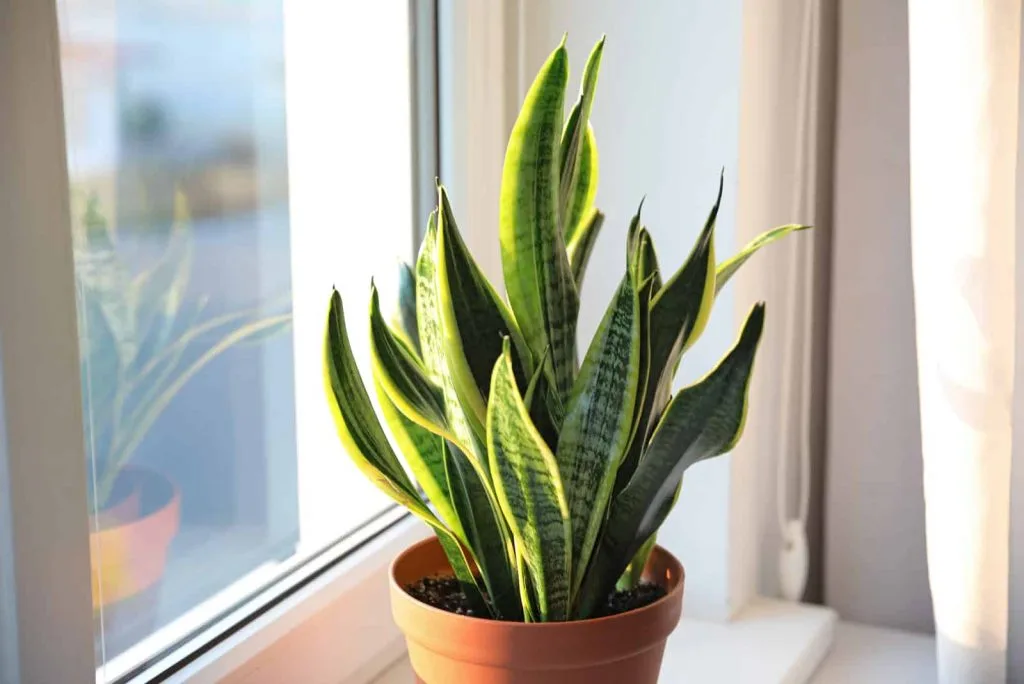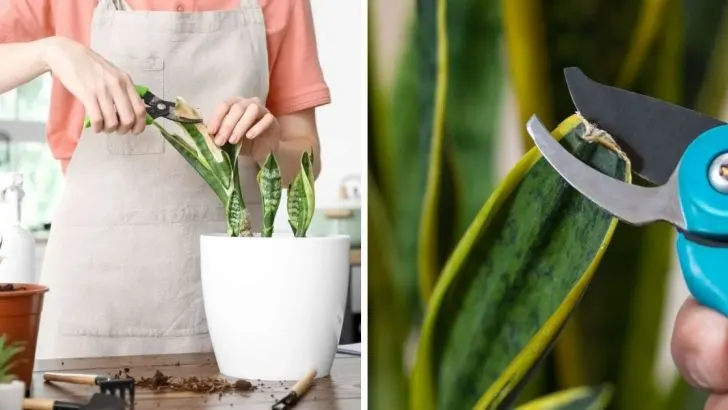Snake plant, also known as Dracaena trifasciata, mother-in-law’s tongue, or simply snake plant, is one of the easiest houseplants to grow.
They aren’t too picky about light conditions or soil type, and if you forget to water them, they won’t hold it against you!
You don’t even need to worry much about pruning or repotting, as they are among the slowest-growing plants in the world.
However, there might come a time when you need to trim your snake plant to keep it looking neat and tidy, especially if there are damaged or rotting roots or leaves.
In this article, we’ll discuss how to properly trim a snake plant, when to do it, and why it’s sometimes necessary.
Why You Should Trim Your Snake Plant

There are several reasons why you might need to trim your plant. Whether it’s due to pest infestation or simply to maintain a certain height or shape, trimming is a key aspect of snake plant care.
Here are some common reasons:
• Maintaining Size: Even though they grow slowly, snake plants can still produce very large leaves. If you have limited space in your home, trimming the tallest leaves might be your only option.
• Removing Damaged Parts: Pest infestations and plant diseases typically affect the leaves of your houseplant. By removing discolored and rotting parts, you prevent the spread of infection to the rest of the plant and nearby plants, allowing your plant to focus on new growth and improving its overall health.
• Keeping It in Shape: Even though these houseplants are low maintenance, their leaves can split, curl, droop, and wilt. Trimming these leaves helps your plant look its best. You might also want to trim your plant to keep it in a specific shape, perhaps to fit a certain spot in your home where it won’t be disturbed by pets or children. Or, you might just do it for aesthetic reasons.
• Encouraging New Growth: Most plants are pruned to encourage new growth. When you trim off old leaves, your plant redirects its energy to producing new ones. Since snake plants propagate through rhizomes, they can root very quickly. You can either repot the plant or trim back the roots to control its growth.
When to Trim Your Snake Plant

Most plants should be pruned at the start of their growing season, and the same goes for your snake plant.
It thrives best when pruned in early spring or early summer, as this is when it’s most focused on producing new leaves.
Since foliage grows during the day and roots at night, it’s best to trim your snake plant in the late evening.
This allows the cut wound to heal naturally before the next day’s sun exposure.
How to Trim a Snake Plant: A Step-by-Step Guide
The method of trimming your snake plant can vary depending on your goal. If your plant is suffering from root rot, pest infestation, or other issues, you’ll need to remove the affected leaves.
If you’re trimming to maintain a certain size, you’ll focus on cutting some of the plant’s largest leaves.
If you want your plant to look neat and tidy and prevent the spread of infection, here’s what you need to do:
1. Prepare Your Gardening Tools

Don’t worry; you don’t need special gardening tools to trim a snake plant. All you need is a sharp knife or a good pair of pruning shears.
Whatever you use for trimming, propagation, or cutting, ensure that you use sterile tools.
You can wash them in warm soapy water or wipe the blades with rubbing alcohol. I always do both, especially after trimming rotting roots.
2. Identify the Damaged Leaves
It shouldn’t be too difficult to spot damaged and yellowed leaves among the healthy, green ones.
Discolored leaves with tiny spots indicate a pest infestation, while yellow leaves point to rot. Brown leaf tips might be a sign of over-fertilization or too much direct sunlight.

Your plant will likely tell you something is wrong, and issues often show up in the leaves. Any leaf that looks different than usual is a sign that something isn’t right.
If there are no damaged leaves and you just want to maintain a certain shape or size, you can skip this step.
3. Tips for Trimming
Now it’s time to get to work. First, be cautious.
You don’t want to damage healthy parts of your plant or hurt yourself while working.
To avoid accidentally trimming additional leaves, leave some space between the affected leaf and the main plant. Hold the snake plant leaf by the tip and gently pull it upward and outward.
You’ll need to cut the leaf at its base. Just above the soil is ideal, as the wound can naturally heal and form a callus before any rot sets in.
You might be surprised by the effort it takes to cut through a snake plant leaf because they’re so thick. Make your cut as clean and direct as possible.
You can either make a straight cut or several jagged cuts. Remove the trimmed leaves by hand and dispose of them properly to avoid spreading any infections.
4. Post-Trimming Care
Trimming can be stressful for your plant, so I recommend not watering it for a few days after the trimming.
However, if you feel that your plant is thirsty and needs some water, consider watering it from the bottom.
Place your trimmed plant in bright, indirect sunlight and avoid placing it in direct sunlight. Direct sunlight can harm your freshly trimmed plant.
If your plant looks sad and droopy, don’t worry. Give it a few days to rest.
If you notice the plant still looks unwell, consider repotting it as it might be suffering from root rot.
Trimming to Maintain Plant Size

Regular trimming is the only way to keep your houseplant from growing too large without repotting or dividing it. Luckily, you won’t need to do this often.
The steps are essentially the same. Start by preparing your tools. Use sterile tools for trimming to maintain plant size.
Instead of searching for damaged leaves, you’ll want to find the largest leaves. The process is then the same as before.
Hold the leaf tips firmly and carefully cut at the base of the leaves. These older, taller leaves are thicker and wider, requiring a bit more effort to trim.
I know it’s hard to cut perfectly healthy leaves, but your plant will produce new leaves as a result!
If you don’t want to waste those perfectly healthy leaves, you can try propagating the plant. Just stick the leaf cutting into soil suitable for snake plants, water well, and place it in a warm spot.
Your Snake Plant Journey Begins
Now that you know how to trim snake plants, I wish you the best of luck with your pruning!
Be sure not to damage the healthy parts of your plant or accidentally cut yourself. Always use sterile pruning shears to prevent the spread of pests and diseases.
Snake plants are relatively hardy, and I’m sure you’ll successfully trim your plant. Just make sure your plant gets plenty of bright, indirect light afterward.
If your plant looks a bit rough after trimming, don’t worry. It might take a few days for it to adjust to the fresh cut.
Use healthy leaf cuttings to propagate the plant, gift your new plant to someone, or start your own snake plant empire!
That’s all, folks. I hope this article was helpful!


